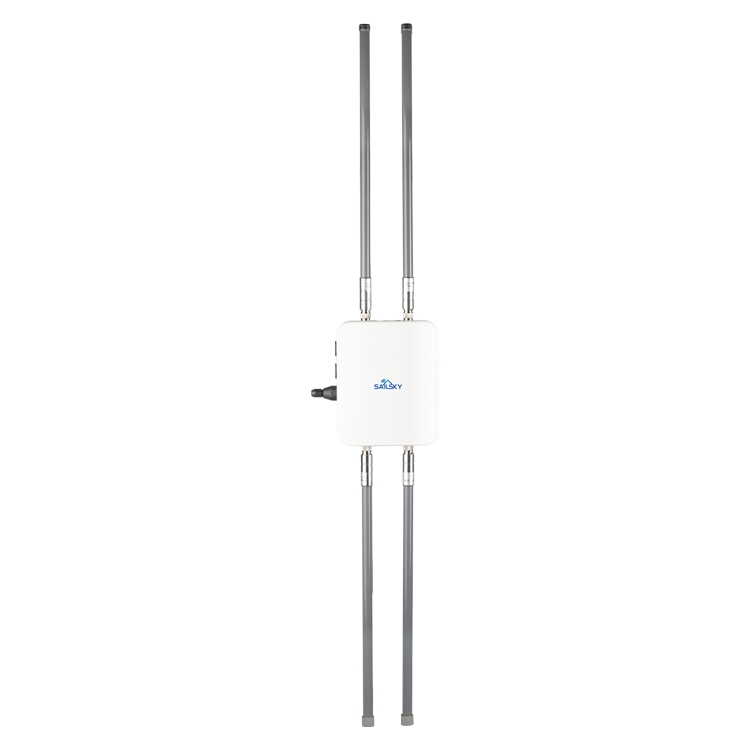Can You Replace A WIFI Access Point Outdoor With An Extender
2022.12.24 / By hqt
What Is The WIFI Access Point Outdoor? What Is The Extender Outdoor?
The WIFI Access Point Outdoor is a device that extends the coverage of your existing Wi-Fi network. It works by receiving the Wi-Fi signal from your main router and rebroadcasting it to areas where there is no coverage. This can be done using a wired Ethernet connection or a wireless connection (Wi-Fi).
An extender is another type of device used to extend your Wi-Fi network range. It works by picking up the signal from your wireless router and rebroadcasting it to your devices.
However, unlike a WIFI access point outdoors, it does not provide its own network connection for computers or other devices. This means that you’ll need to connect each device directly to the extender instead of directly to the router itself.

The extender is basically an indoor device:
An extender is basically an indoor device that you place outside your home. It will connect to your existing home router’s WiFi signal and then repeat that signal further out into your garden or yard.
However, the range of a WiFi extender is limited, and it’s not as fast as the network connection provided by your router. So, if you want to get the most out of your garden or yard, you should consider placing an access point outdoors instead.
Why Is The Extender Not Recommended To Replace WIFI Access Point Outdoor?
- Access points and extenders serve different purposes. Access points are designed to provide wireless network coverage to a specific area, while extenders are intended to extend the range of an existing wireless network.
- Access points typically offer more advanced features and better performance than extenders. For example, access points can support more users, offer faster speeds, and provide better security.
- Outdoor Access points are designed to be installed outdoors, while extenders are intended for indoor use mostly. Using an extender in place of an access point may result in poor performance and unreliable connectivity.
- Using an extender in place of an access point may not provide the coverage and performance that you need. Access points are specifically designed to provide wireless network coverage, while extenders are intended to extend the range of an existing network.
- Using an extender in place of an access point may not provide the coverage and performance that you need.
The WIFI Access Point Outdoor Work In A Wireless Way:
The function of the WIFI Access Point Outdoor is to provide wireless connections for all your devices, including laptops, smartphones, and tablets. In order to achieve this, the outdoor access point uses radio frequency signals to send and receive data from devices. You can find some wireless antennas on the top of an outdoor access point that is used for sending or receiving radio frequency signals.
The WiFi signal from the outdoor WiFi access points can be used to create a secure connection between devices like laptops, phones, and tablets — even if they’re inside buildings.
The main advantage of using an outdoor WiFi access point is that it can be mounted on top of a building or on poles in locations. There are no existing phone lines or cables running into or out of the building.
This makes them ideal for businesses that need to provide WiFi coverage in remote areas where there’s no other way to get broadband internet service (for example, hotels).
In contrast, extenders use cables to connect to other devices so that they can broadcast signals from one device to another. The most common types of cables used by extenders are Ethernet cables and power cords. This means that you need a power outlet near where you want to place your extender so that it can work properly.
Sailsky WIFI Access Point Outdoor Can Be A Better Choice For You:
There are many advantages to using WIFI Access Point Outdoor. Here, taking Sailsky WIFI Access Point Outdoor as an example, briefly introduce its functions and the benefits brought by these functions:
Better: dual-band with a long-range signal:
Sailsky WIFI Access Point Outdoor is a high-end product that supports dual-band and has a long-range signal (up to 400 meters). It can work on 5GHz and 2.4GHz bands to meet the needs of different users.
It is also equipped with an advanced chipset: Qualcomm IPQ4019+QCA9886+QCA8075. This makes it even more powerful.
Easier to use: it can be powered by POE
POE, or Power over Ethernet, is a way of providing electricity to devices by using the same cable that carries the data. The Sailsky WIFI Access Point Outdoor has an IEEE 802.11 b/g/n WiFi-compliant power supply port (which is standard for all current POE devices).
In other words, you can connect the Sailsky WIFI Access Point Outdoor with an Ethernet cable to your PoE switch and it will get its power through the same cable. This makes it easier to install because you don’t have to worry about running separate power wires.
Safer: with better outdoor protection
Sailsky WIFI Access Point Outdoor is safer to use. The waterproof design (IP67) provides better protection against water, dust, and sand than other wireless access points.
More powerful: capable of 128+ users
It has the capability to connect 80 to 120 users at the same time. Sailsky WIFI Access Point Outdoor can handle a large number of users with ease. The powerful processor and memory ensure that it will not slow down when many devices connect to it at the same time.
Conclusion:
In conclusion, we do not recommend you use an extender to replace the WIFI Access Point Outdoor. Because the work efficiency of WIFI Access Point Outdoor is stronger and more suitable for outdoor. If you want to get professional outdoor wireless telecommunications network equipment, Sailsky is a good choice.

